Amy’s Melanoma
and
Cervical Cancer
Story
Interviewed by: Alexis Moberger
Edited by: Chris Sanchez

Amy got through both melanoma and cervical cancer, and is eager to share what she learned from her experience.
You may be familiar with Amy, her husband, and their Australian shepherd Roxy if you’re active on social media; they’re the nature-loving family that takes half the year off to hike and travel in their Airstream, and shares their adventures online. But Amy is also a cancer patient advocate. She has had melanoma not just once, but four times, and has also overcome cervical cancer to boot. She travels constantly not only to explore, but also to spread awareness of skin health and the importance of keeping safe from the sun while enjoying the great outdoors.
Amy’s cancer story starts way back in her childhood. Like many others of her generation, she was ignorant of the dangers of unprotected exposure to sunlight, and would spend hours recklessly soaking up the sun in search of the perfect tan. She was just 8 when she got badly sunburned, after which a strange pattern resembling a birthmark appeared on her right arm and right back. Doctors weren’t overly concerned, shrugging the mark off as just a reaction to being in the sun.
More years of unprotected exposure to sunshine meant that Amy just kept on getting sunburned. She was 17 when her mother noticed that the mark on her arm and back was many times darker than the skin around it, and that plenty of moles were forming in the area. She was taken to a dermatologist–her first-ever visit to one–who performed multiple biopsies and diagnosed atypical dysplastic nevus, moles that look different from other moles and which are benign, but which can be harbingers of melanoma itself.
As Amy grew up, she continued to be at risk for skin cancer. She became a photographer whose work frequently took her outside, during which she preferred to wear less-protective clothing like tank tops. Her first cancer diagnosis came in 2016, when she was 28. The biggest and darkest spot she had yet seen appeared on her upper right chest, and it started to bleed. She ran to her dermatologist for a biopsy. The spot was diagnosed as melanoma stage 1B, on the verge of transitioning to stage 2.
The doctors successfully performed wide excision surgery, and afterwards Amy started to take her skin health seriously. She began to wear sunscreen and protective clothing, and started to have regular checkups. But her past years of unprotected sun exposure would not be overcome so quickly; she would struggle with 3 more bouts of melanoma, the latest one having been successfully treated in May 2023.
Amy is also a cervical cancer survivor, having been diagnosed and having successfully undergone treatment for her cancer in 2022. She has also experienced setbacks at seeking medical treatment; after moving to another state, she saw a doctor who did not agree with her concerns about her skin, and had to seek another healthcare team who would be more supportive.
In the past, Amy underwent genetic testing to determine the basis of her melanomas’ behavior. This testing has revealed two cancer mutation markers that place her at significant risk for ovarian, breast, and pancreatic cancers. These findings are further compounded by the fact that she has the connective tissue disorder Ehlers-Danlos Syndrome, which has been linked with issues and complications with melanoma, as well as a family history that includes breast cancer, melanoma, colon cancer, bone cancer, and cervical cancer. Amy had undergone major surgery in 2006 to correct some complications due to Ehlers-Danlos Syndrome.
Amy’s story is a testament to how important it is to be one’s own advocate; to seek out medical assistance that truly serves one’s health, as well as a support system that has one’s back and helps one realize that one is not alone; to be resilient and determined, even when the going gets really tough; and to take skin health seriously.
In addition to Amy’s narrative, The Patient Story offers a diverse collection of stories about melanoma and cervical cancer. These empowering stories provide real-life experiences, valuable insights, and perspectives on symptoms, diagnosis, and treatment options for cancer.
- Name: Amy H.
- Diagnosis:
- Melanoma
- Cervical cancer
- Staging:
- Melanoma: Stage 1B (2 instances), Stage 1A, Stage 0
- Cervical Cancer: Stage 1
- Initial Symptoms:
- Melanoma: Bad sunburn (at age 8) that resulted in a birthmark-like pattern on her right arm and parts of her back
- Cervical cancer: Painful intercourse, pain during Pap smears, cramps
- Treatment:
- Melanoma: Excision surgery (wide local excision), Mohs surgery
- Cervical cancer: Partial hysterectomy
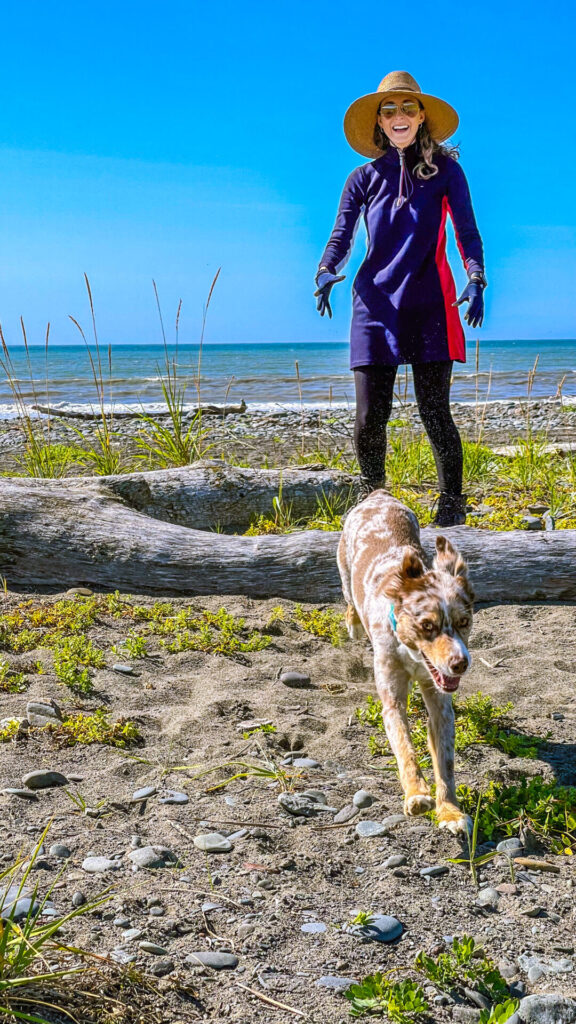
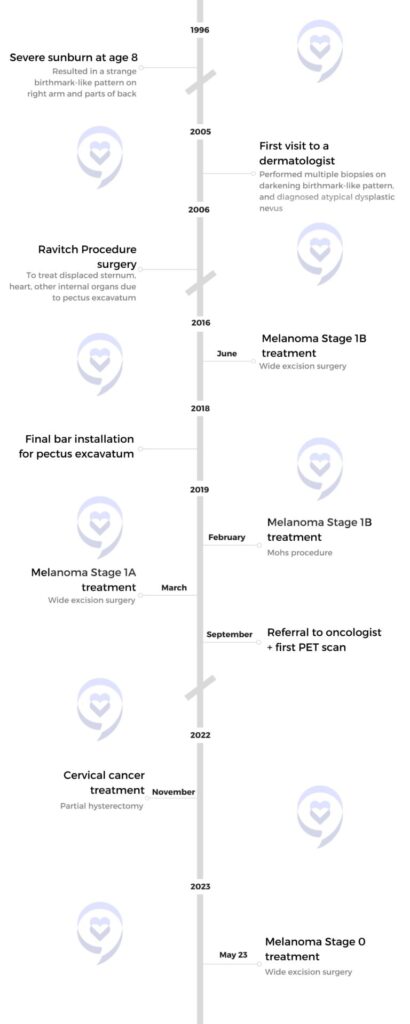
This interview has been edited for clarity. This is not medical advice. Please consult with your healthcare provider for treatment decisions.
I just want to help anyone that I truly can, and not feel like they’re alone in this journey.
Introduction
I’m Amy Nichole, and everyone on social media knows my husband and I because we travel six months out of the year in our Airstream with our Australian shepherd, Roxy. What better way to really see the world then do that and be able to take our fur baby with us. So with my background in photography, it’s just a really good combo. We love hiking and seeing new places in the US and Canada.
Our travels are also important to me because they help me with my advocacy. I work to spread more awareness on how you can stay outdoors, be active in the sun, but also protect yourself with sunscreen, protective clothing and hats. I truly just want to help others to not be afraid of the sun even after they’ve been diagnosed. With us being out on the road so often and for so long, this is what I do and it has helped me stay safe during our travel days.
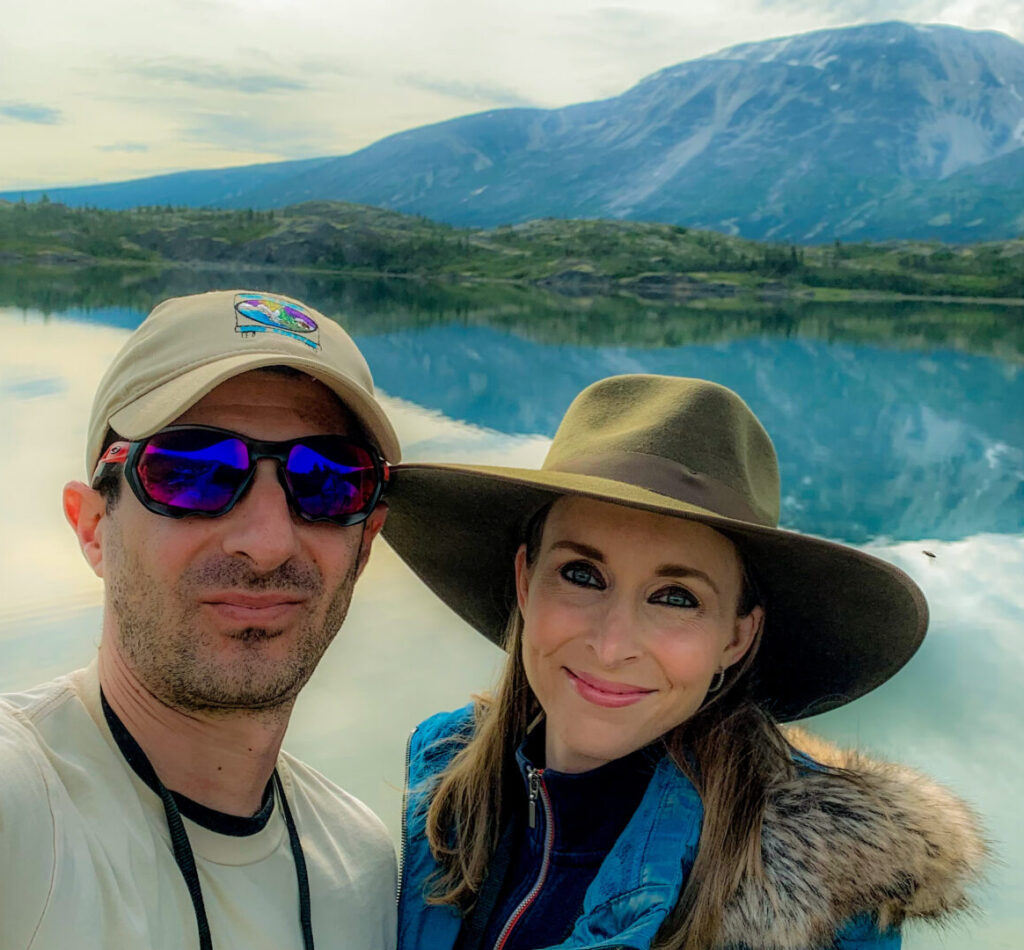
Health conditions and complications
To put my cancer history in proper context, here’s a little bit about some health conditions and complications I’ve faced.
Family history of cancer

Sad to say, cancer runs in my family.
My mother has had cervical cancer, my grandfather is currently battling colon cancer, and my great-grandmother had melanoma and breast cancer–the latter almost killed her, but what killed her in the end was melanoma on her foot in her 60s. And my grandmother on my father’s side had bone cancer.
Cancer mutation markers
I also carry not one but two cancer gene mutations.
You’ll see that in 2019, I went to an oncologist for a checkup. Although we didn’t find any melanomas, he urged me to do genetic testing because he felt that with me having a weird sunburned design on my arm and back (more on this later), there’s still something going on.
So we did genetic testing and it revealed my two cancer gene mutations. They both carry very high risk for ovarian, breast, and pancreatic cancer, both of them. Melanoma is very common for people with those levels of risk and those cancers.

Ehlers-Danlos Syndrome
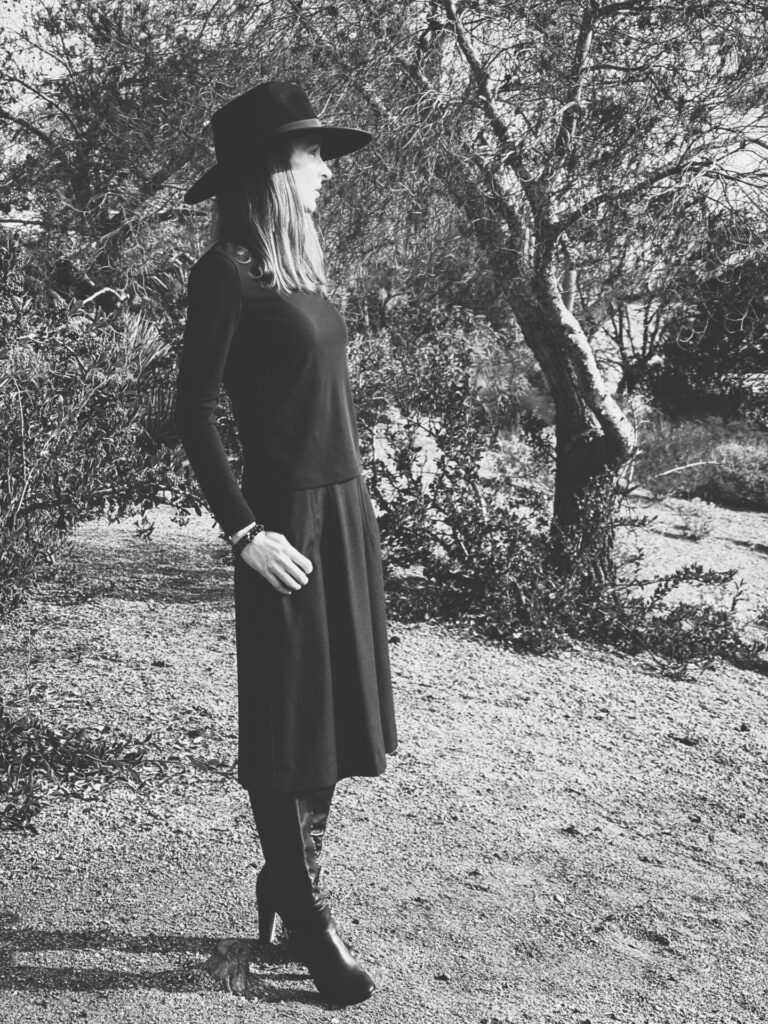
And on top of all that, I also have a connective tissue disease called Ehlers-Danlos syndrome. Not only is this syndrome debilitating in itself, experts have also found links to complications and issues with melanoma.
Because of this syndrome, I have had multiple combinations with the collagen in my skin that keeps the bones and stuff in place. My sternum was concaved inward and that’s called pectus excavatum; it’s so severe that my heart was pushed to the left and down and is deformed because it didn’t have enough space. My lungs could not fully open, especially the one on the right, which means I couldn’t get the full oxygen intake. No thanks to this condition, I’ve had multiple instances of pneumonia growing up; I was always sickly; and I had a hard time breathing. I was misdiagnosed multiple times with asthma and then anxiety.
In 2006, matters with my condition came to a head. Doctors at UCLA said, we need to fix your chest now–otherwise, by age 30, you’ll most probably pass away because everything is so compressed and your heart is under tremendous stress. And I was going into a lot of tach rhythm and stuff, like tach, SVT, AFib And they said that it eventually would lead up to ventricular tachycardia with how much stress the heart was being put under.
So they did a procedure called the Ravitch Procedure. It should have been a two hour surgery, but it actually took nearly 9 hours to finish, because once they opened me up, they realized on the healer index that I was a 13.9. To have the surgery you need to have a 2.9. So I was way above and beyond what they’ve ever done before.
It was like open heart surgery. They cracked the sternum in two places to reconfigure it, to get it straight; broke every single rib twice; and then wired everything shut and put this bar in for six months. But a year and a half later, I started having more heart issues. And when they checked my chest out, they found out that my sternum was concave again, and even worse compared to before I had the surgery.
Not only did they have to put the bar back, but they also did a newer surgery method called the Nuss procedure. This was not without risk, because this procedure is usually done on 12 year olds. I was in my 20s, with my body already done growing, so the procedure was risky, but necessary.
We found a pediatric thoracic surgeon at UCLA to do the surgery. I did have complications. I was in the ICU for three weeks when I should only have been there for two nights. The bar stayed in for four years, not six months. And my cardiologist really pushed that surgeon. Don’t take it out. We saw what happened the last time. He was like, no, this surgery, you have to have that bar out. She can’t keep it in because it technically went from one rib to the other rib. We did end up extracting it.
But in 2018, I had to have the bar put in again–my third and final repair for my pectus excavatum, and the bar went in to stay this time.
We found a surgeon in Las Vegas who would do the surgery. He said, OK, usually this bar would need to come out after four years, but given your health situation it needs to stay in. Technically, your condition is severe enough that we should be putting in two bars. But because two would really limit your mobility, and since you’re going to leave it in, we need to try it with one bar to start and see how it does.
So they put in a titanium bar that lets me do an MRI and have all the scans when I need to. I did have major complications once again, like pneumothorax in both lungs that kept me in the ICU for a whole month and a half. I have this huge scar that starts under my breast. But I did pull through, and my heart and lungs are as good as they can be now.
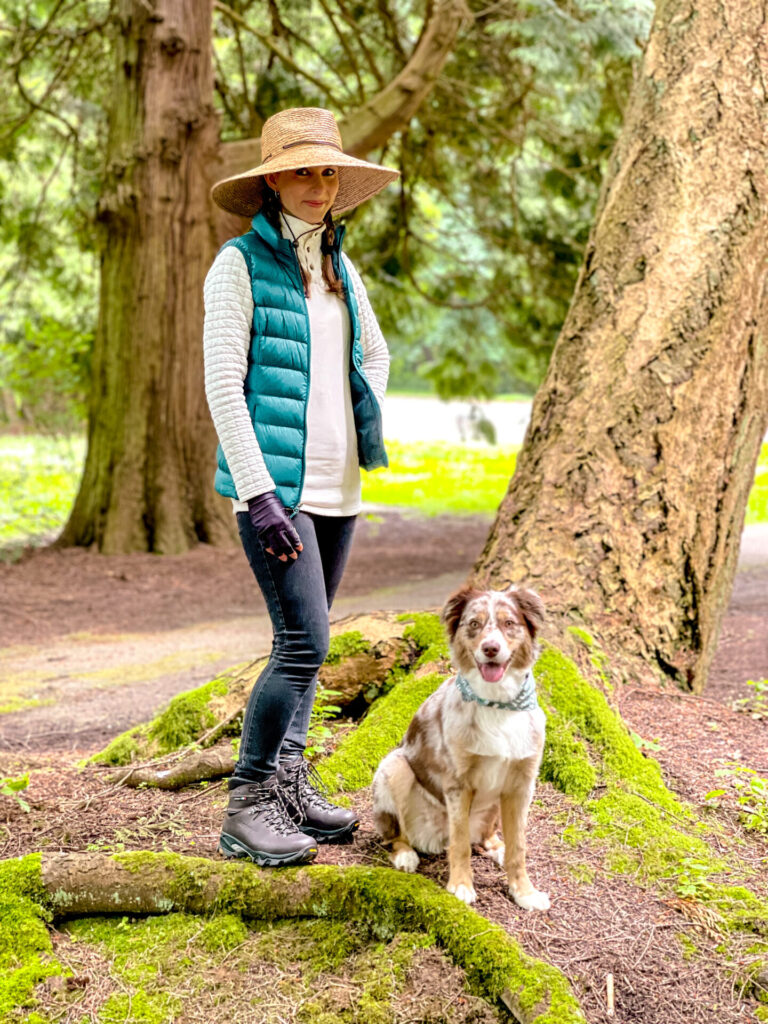
Pre-Diagnosis
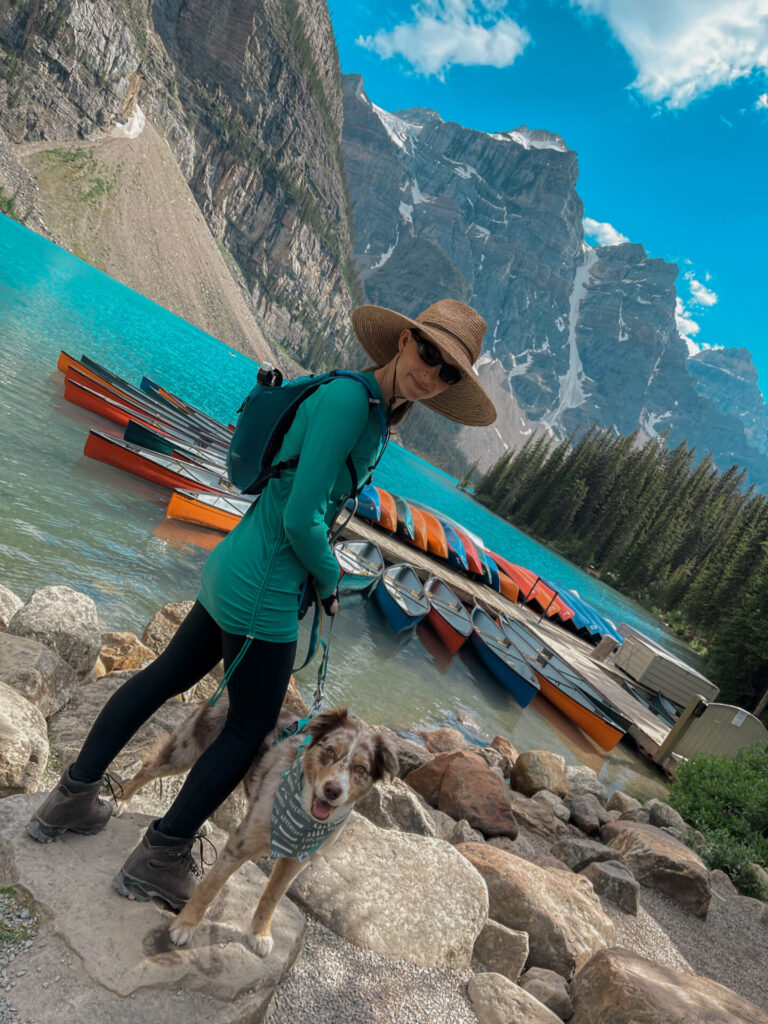
I was not the best when it came to sun protection growing up.
Back then, we all were not very aware that laying out was really going to cause all these issues in the future, because back then everyone was like, oh, you have to look tan or you look sick. And I was super pale with my complexion and my background and all that. So I really went against what I should have done for my skin.
At age eight, I got a really bad sunburn. And my mother had noticed since that sunburn, I got this really weird design on my right arm and on my right back. It looks kind of like a birthmark. And she took me to the doctors.
They’re like, it’s fine. It’s just a reaction to the sun. But my mom’s like, she wasn’t born with it. They retorted, I know, but it’s just a reaction. So they just kind of pushed it aside.
And then in my teens, laying out with oil to try to get that tan, I didn’t do tanning beds, but laid out for hours on end every single day to try to get that tan and had multiple sunburns because of it.
And then when I was about 17, my mom noticed that that design on my arm and my back was getting ten times darker than my actual complexion. And a lot of moles were forming, all around it, and only in the actual design itself. So she’s like, we need to get you to like a dermatologist. It’s a skin doctor–my very first visit to one–and they’re going to know what’s going on.
So they just started watching my skin at 17 and we’re doing biopsies. And I was diagnosed with atypical dysplastic nevus. But I didn’t take it very seriously, even though I was having multiples of them: some mild, some moderate, others severe. And even with having excisions at such a young age, I still didn’t really know much, and certainly didn’t put two and two together.
If you butt heads with or don’t agree with your doctor, don’t get defensive with them or question them personally. Do your research and get a second opinion. But don’t stop thinking that you’re losing your mind or overthinking. Go with your gut.
If you feel something is off, listen to your inner guts and go with it.
Because at the end of the day, you are the one that sees your body daily. You know how you feel.
Diagnosis and Treatment
When I was 28 years old, things took a really serious turn.
I had become a photographer who was always outside for shoots–without hats and in tank tops and clothes like that. I had to start going every 3 to 6 months to my dermatologist in UCLA.
And she gave me the ABCDEs of melanoma, and then I started reading it. I’m like, hmm, maybe I should start really looking at all of these spots all over my body.
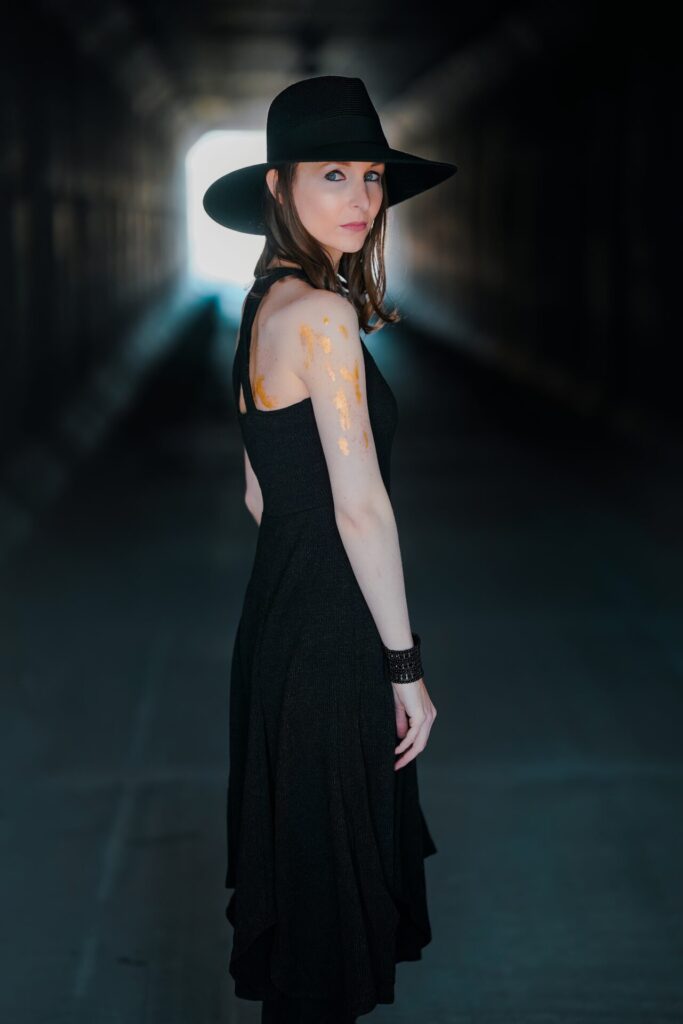
Melanoma: Stage 1B (June 2016)
One day I started having this spot right here on my upper right chest itch. I’m like, maybe I have an allergic reaction because my skin is sensitive. But it started to bleed. This one spot was a lot bigger and pretty dark compared to all the other spots.
And so I called my dermatologist, and she looked at it. Well, it’s not super inflamed or anything, she said, but we’ll biopsy it.
Within three days she called me. The biopsy came back as melanoma stage 1B and it was really close to changing to stage 2. And she said, we’re going to have to get you in right away to get a wide excision done.
After the surgery, my doctors at UCLA urged me to see a dermatologist every three months and I agreed to do so. We lived in Las Vegas and I had to find someone to go to frequently. I didn’t really see eye to eye with the first dermatologist I went to, however.
I felt he looked at me like I was young and I didn’t know what I was doing and didn’t know your skin. And there were other issues too. When I got him to biopsy a worrisome spot, he told me it was moderate atypical dysplastic nevus, which I had had in the past. I requested a wide excision, which is what they would have done at UCLA because of my history of melanoma. But the doctor said, it looks fine–and I will see you in a year because I’m fully booked.
I tried to get myself a booking for a checkup 3 months later, but couldn’t. So I waited it out and finally saw him after 8 months–during which not only did the spot he had removed grow back over the scar, another spot across it actually started growing. So, two menacing spots.
I asked him to biopsy both–but he said he only had time to do one. I had him look at the one that grew back, and it was melanoma. He didn’t tell me the Clark level or stage. He just referred me to a Mohs surgeon and said, I’ll see you after a year.
Melanoma: Stage 1B (February 2019)

I got transferred to another facility that was absolutely amazing. Their type of care was above and beyond. They took me in right away.
I underwent a Mohs procedure with their awesome surgeon. It took six hours to keep cutting because it was really deep. It was a Clark level of five. So he said that one was closer to stage two than my first one was. And he was shocked because it was a moderate atypical dysplastic nevus, which he said the odds are so low for it ever changing into melanoma. But yours did, he said, and in eight months.
If it would have been left, it would have been stage two, he said, within a matter of a month or two or sooner, you don’t know, because melanoma is weird.
And while he was in the last round of cutting, I asked him, is there any way you could look at the other spot that’s across from it? Of course.
And within a week that one came back as Stage 1A melanoma.
Melanoma: Stage 1A (March 2019)
The doctor was like, okay, that’s not good. You need to get established with us and leave the other dermatologist because obviously he didn’t have your best interest at heart.
So I moved my whole team to that facility, got a dermatologist through them, and I started seeing them every three months. And that dermatologist said, you need to get in with an oncologist now.
I asked, why? It didn’t go to my lymph nodes. It hasn’t spread. The dermatologist explained, in such a short time period you’ve had no less than three melanomas. There’s something going on with your body; it’s producing them rapidly and we need to get to the bottom of it.
Oncologist, PET scan, and genetic testing
So by September 2019, I saw an oncologist and then got established with him, did my first ever PET scan. Everything was clear. There was no hidden melanoma, nothing, which was a real godsend.
And then he was like, we need to do genetic testing because I really feel with you having this weird design, there’s something going on. This is when I underwent the genetic testing I mentioned earlier.
Cervical cancer (November 2022)
Near the end of 2022, I decided to undergo a partial hysterectomy–to head off any possible issues stemming from my Ehlers-Danlos syndrome and to deal with a persistent HPV infection.
I experienced several symptoms pointing to cervical cancer, such as painful intercourse and discomfort during Pap smears, as well as cramping.
Because of my syndrome, I’m not a candidate to get pregnant, because I’ll just pass my condition on to any child I have. Moreover, if I do get pregnant, I have a 50% chance of not surviving the pregnancy anyway due to complications with my condition, and the hormones might actually make my heart rupture. So, at 23, my husband and I decided I would get my tubes tied.
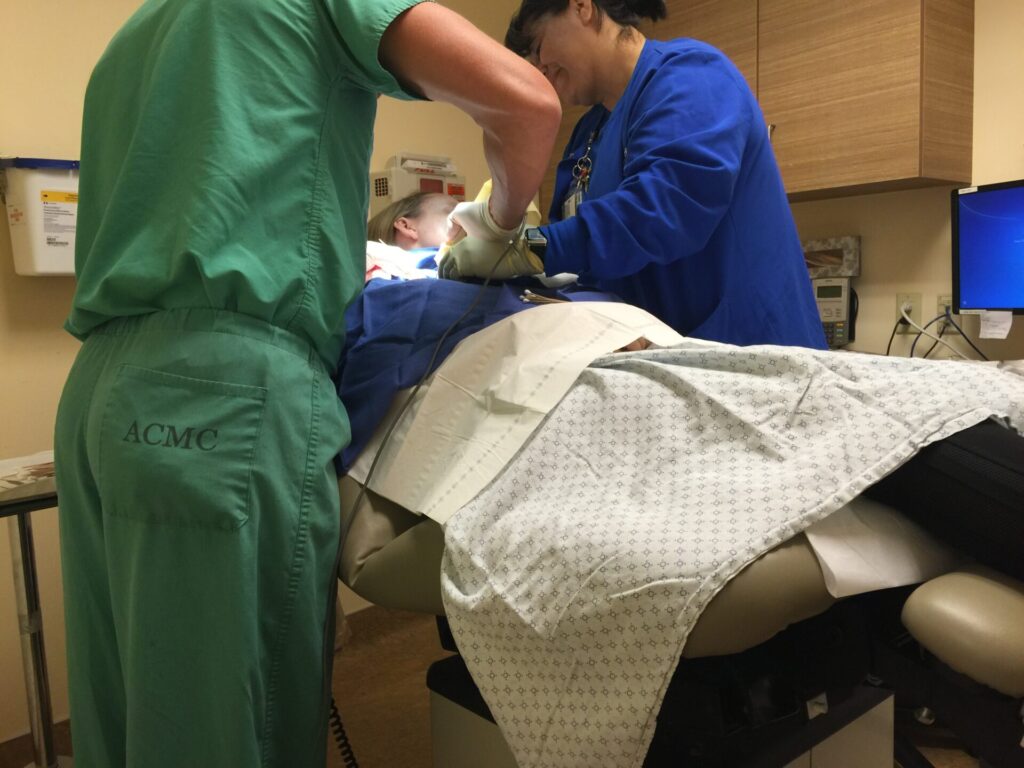
Because my existing OB-GYN wouldn’t do the procedure, I found a high-risk OB-GYN who would. But another development occurred. Because of my family history of cancer, I’ve been undergoing Pap tests every year. In 2017, I tested positive for HPV. The doctors reassured me that this was normal and that a healthy body would get rid of it naturally within six months. In 2018, my HPV test came back negative, but in 2019 it came back positive. So we switched to 6-month testing and the tests just kept coming back positive. But because the cells were mild and not changing too much, we decided to just watch it.
In 2022, just before my family and I left for our travels, I was tested again and the cells had changed once more. My OB-GYN told me that we would test one more time after we returned from our trip, and if the cells had changed further, I would need to get a hysterectomy.
We got back from the trip, I got the test, and the cells did change again. So I was scheduled for a hysterectomy as the doctor advised, on November 11.
My husband and I decided that if my ovaries looked clean when the OB-GYN went in, we would just leave them and have a partial hysterectomy. Additionally, I didn’t want to go through menopause at age 35. I was happy to hear that my ovaries looked clean and good, so the OB-GYN left them in and we decided I would just undergo regular testing each year.
Unfortunately my stay at that hospital resulted in significant complications.
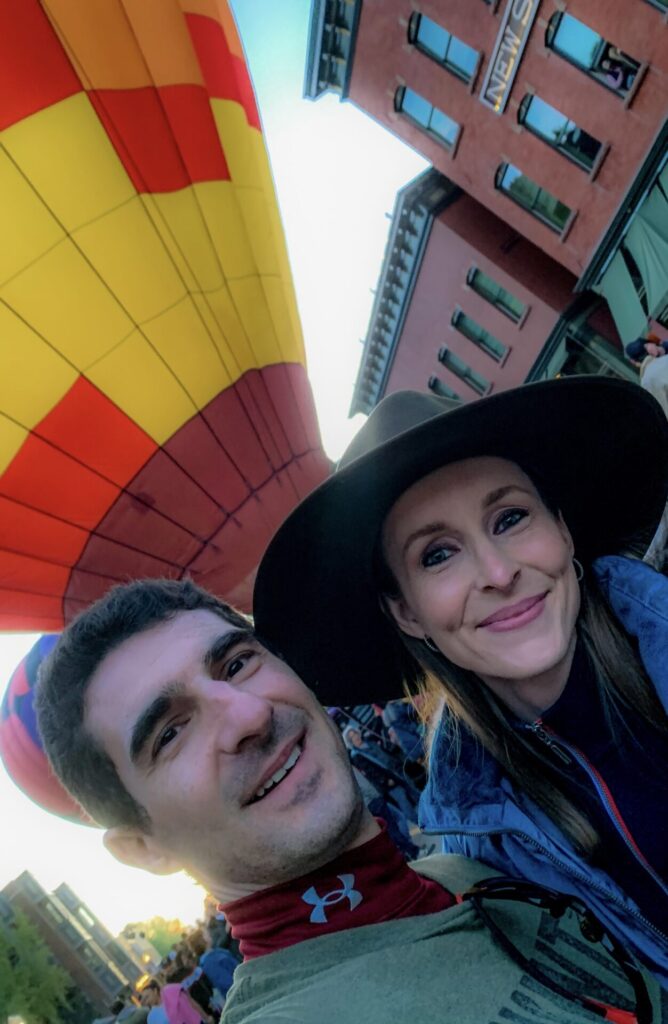
I stayed there for eight nights and barely ate while I was there; I just had their ice chips and water, and had no appetite. My husband was increasingly suspicious because I usually do have an appetite.
So he brought me home, which was alright since we live less than 10 minutes away from that hospital. But over the next few days, I started running a fever and also began to have diarrhea about every 20 minutes, and then began to have breathing problems and the left side of my face was swollen shut. So my husband brought me back in.
They determined I had a gastrointestinal infection. They administered antibiotics and had me stop eating and drinking for 48 hours, and at first I was feeling much better. But after a couple more days, my symptoms worsened to the point that I was either vomiting or having diarrhea.
By the 7th day, I had to force a couple slices of pizza down because I hadn’t eaten anything except the ice chips and water. An hour after I ate, my belly was super swollen and I started vomiting and couldn’t stop. A CT scan was performed–and we discovered that my infection had spread throughout my entire intestines.
We gave up on that hospital and transferred to another one. There, we discovered that I had contracted a bacterial infection like E. coli from the other hospital’s water and food, and it had spread like wildfire since the antibiotics had covered it up. The new hospital also found out that my potassium was dangerously low, just 2.4, and my liver was in the 500s. I ended up having to stay an extra 10 days at that hospital to recover and didn’t get to go home until mid-December, and also lost 25 to 30 lbs.
I truly just want to help others to not be afraid of the sun even after they’ve been diagnosed.
Melanoma: Stage 0 (May 2023)
Just last year, a fourth melanoma appeared on my upper right back, again within that distinctive birthmark-like design.
As it turned out, we had caught it early; it was at Stage 0. I underwent a local wide excision, which successfully prevented it from progressing to Stage 1.
Life and lifestyle changes
I’ve made some small but powerful life and lifestyle changes, dating from my first brush with melanoma.
I started to shift my whole mindset–began to wear hats, change out my wardrobe in favor of more protective clothing that’s UPF 50, and improve my behavior: always wear sunscreen, and never step outside again without sleeves, even if it’s 120 degrees or something.
Even my husband’s mindset changed; he’s from Greece, where they’re not really big on sun protection either, and he just loves being outdoors and going mountain biking and so on. But after seeing what I underwent, he changed too.
I’ve also made significant changes to my diet as well. My oncologist and team have told me to stay away from sugar because my cancer wants anything it can have, it will want it to produce these mutations to produce the melanoma. So I made the decision to reduce my sugar intake to very low levels. The only sugar that I get is from natural sources, fruits. I also eat lots of veggies.
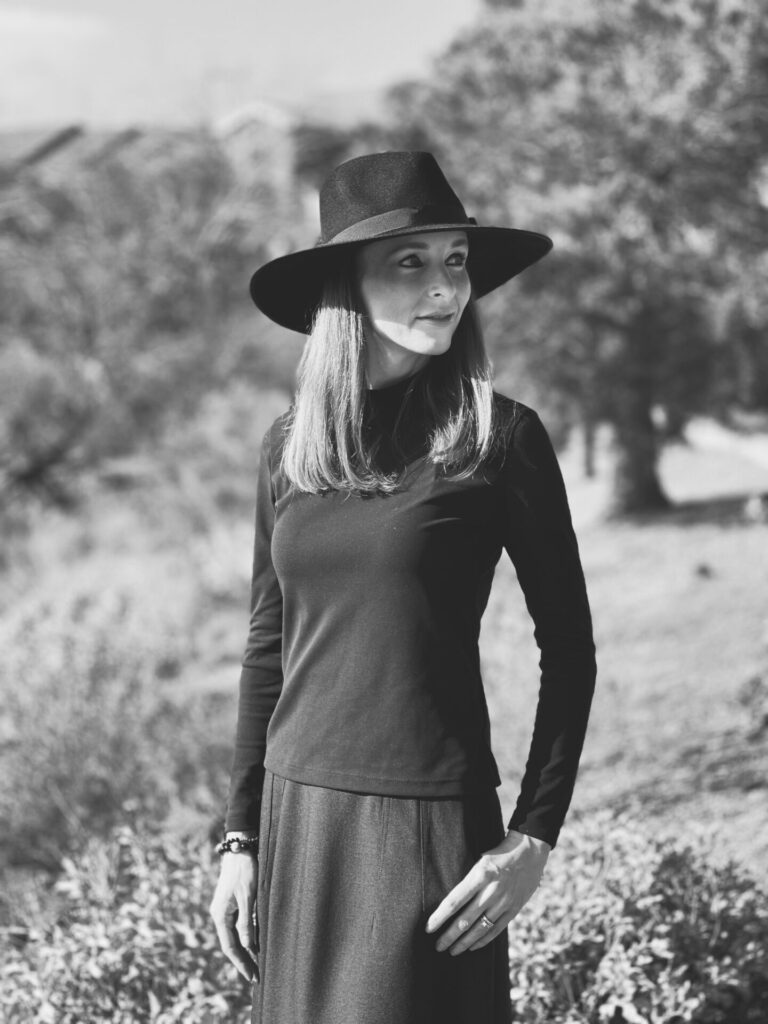
I also take daily Vitamin D supplements. When your Vitamin D level is low, if you have the mutation I have, you’re actually at higher risk for cancer. I actually am deficient in vitamin D. So my daily supplements are crucial.
I also make sure I walk daily, which is easy because Roxy, our Australian Shepherd, has so much energy you literally have to make sure she goes for her walk.
I just want to help anyone that I truly can, and not feel like they’re alone in this journey.
Words of advice
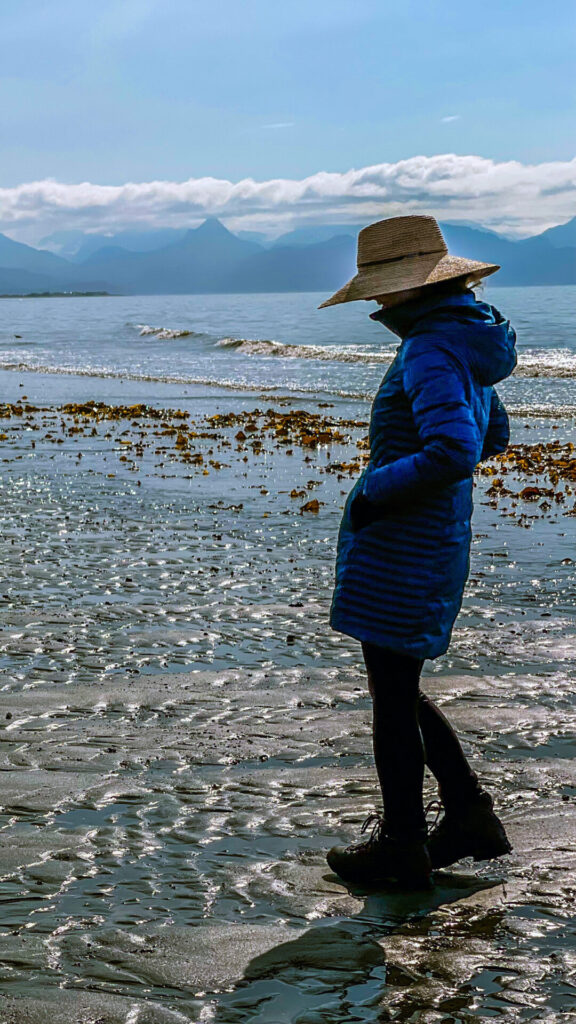
I just want to help anyone that I truly can, and not feel like they’re alone in this journey.
The four times I’ve had melanoma, I’ve used my experience to educate others, to try to help them not make the same mistakes and just help as many people as I can by sharing my own journey.
And if they’re fighting it right now, I try to help them with just being there for them. We have a really big community on Instagram of others that have melanoma, and we just work together doing drills and stuff to spread awareness and doing Lives, asking people, what are your fears? Just to show them that, hey, you’re not alone, that we all have your back. And if you need someone to talk to, we’re all there for you.
I also have advice to offer regarding doctors. If you butt heads with or don’t agree with your doctor, don’t get defensive with them or question them personally. Do your research and get a second opinion. But don’t stop thinking that you’re losing your mind or overthinking. Go with your gut.
If you feel something is off, listen to your inner guts and go with it. Because at the end of the day, you are the one that sees your body daily. You know how you feel. You know how you should feel. They do know what they’re talking about. The doctors, they don’t want something to go wrong with you, but they don’t see your body daily or know you personally. They know what to do to treat you and stuff. But if you feel that what you are being told is not matching to what you feel should be done, get a second opinion.
You also need to find a doctor that you feel comfortable with, especially an OB-GYN. I don’t feel comfortable with the male OB-GYN, for instance. I feel more comfortable with a woman. You need to feel comfortable with that doctor, because it’s a very intimate type of situation. You need to be on the same page with them and just feel safe with their judgment. And also someone that will not push you to wait three years to five years, even though that’s what the new standard is, especially if you have a history.

Lastly, this is specific to those who are suffering from hair loss. Find a hair company, if you know you’re having that issue, and find a supplement that will help promote the hormones to balance them out naturally than having to take medicines. They have so many side effects and, I feel, actually cause more damage than good. If you can avoid them, I try to avoid them. I use Soothe Vitamins from Keratin Haircare and it’s all natural. They help women and men that have experienced hair loss at all ages, and they’ve been there for me since I had my melanoma return in 2019, and I could not have done half the stuff that I have with my hair without them.

Inspired by Amy's story?
Share your story, too!
Related Cancer Stories
More Melanoma Stories
Ellis E., Melanoma, Stage 3A
Symptoms: Changing mole on arm
Treatment:s Lymph node resection, immunotherapy (Opdivo), targeted therapy (BRAF inhibitor)
...
Treatment: Surgeries, skin checks...
Treatments: Surgery, chemotherapy, radiation, immunotherapy, tumor-infiltrating lymphocytes (TILs)...
Amy H., Melanoma, Recurrent (Stage 1B, Stage 1A & Stage 0) & Cervical Cancer (Stage 1)
Symptoms: Melanoma: Bad sunburn leading to scarring; Cervical: painful intercourse, cramps, pain during Pap smear
Treatments: Melanoma: Excision and Mohs surgeries, Cervical: partial hysterectomy
...
More Cervical Cancer Stories
Samantha R., cervical cancer, adenocarcinoma
Symptoms: Irregular bleeding, pain
Treatment:Surgery: radical hysterectomy, pelvic exenteration surgery; chemotherapy; immunotherapy; radiation therapy; hormone replacement therapy; hyperbaric oxygen therapy
...
Mila L., Squamous Cell Cervical Cancer, Stage 1B1
Symptoms: Abnormal lump in cervix area, bleeding after sex
Treatment: Chemotherapy (cisplatin), radiation, adjuvant chemotherapy (carboplatin & paclitaxel
...
McKenzie E., Cervical Cancer, Stage 3C2
Symptoms: Severe abdominal & back cramping, persistent & extreme pain, heavy discharge & bleeding
Treatments: Radiation, chemotherapy (cisplatin), brachytherapy, immunotherapy (Keytruda)
...
Marissa N., Squamous Cell Cervical Cancer, Stage 3B
Symptoms: Excessive and prolonged vaginal bleeding
Treatment: Chemotherapy (cisplatin), radiation, brachytherapy
...
Leanne B., Cervical Cancer, Stage 4
Symptoms: Fatigue, irregular periods, pain after sex
Treatment: Radiotherapy, brachytherapy, chemotherapy (carboplatin & paclitaxel)/p>
...
Kristine M., Adenocarcinoma Cervical Cancer, Stage 2B
Symptoms: Tumor found during postpartum pap smear
Treatment: Colposcopy with endocervical curettage, cone biopsy, total abdominal radical open hysterectomy with lymph node removal
...
Kate R., Squamous Cell Carcinoma of Unknown Primary Origin, Stage 3C
Symptoms: Intermittent spotting during or after sex, unpredictable menstrual cycle, abdominal pain particularly under the rib cage
Treatments: Chemotherapy (cisplatin & paclitaxel), immunotherapy (Keytruda), surgery (total abdominal hysterectomy with bilateral salpingo-oophorectomy & omentectomy)
...
Gwendolyn J., Cervical Cancer, Stage 4
Symptoms: Heavy menstrual cycles, severe back pain, stomach bloating
Treatment: Chemotherapy, radiation, tisotumab vedotin (clinical trial)
...
Treatment: Chemotherapy, radiotherapy, brachytherapy, hormone therapy...
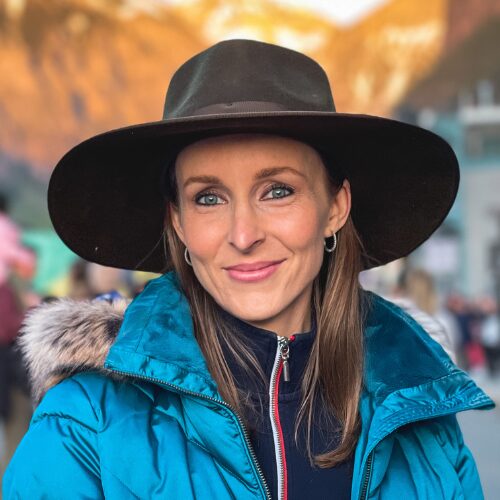
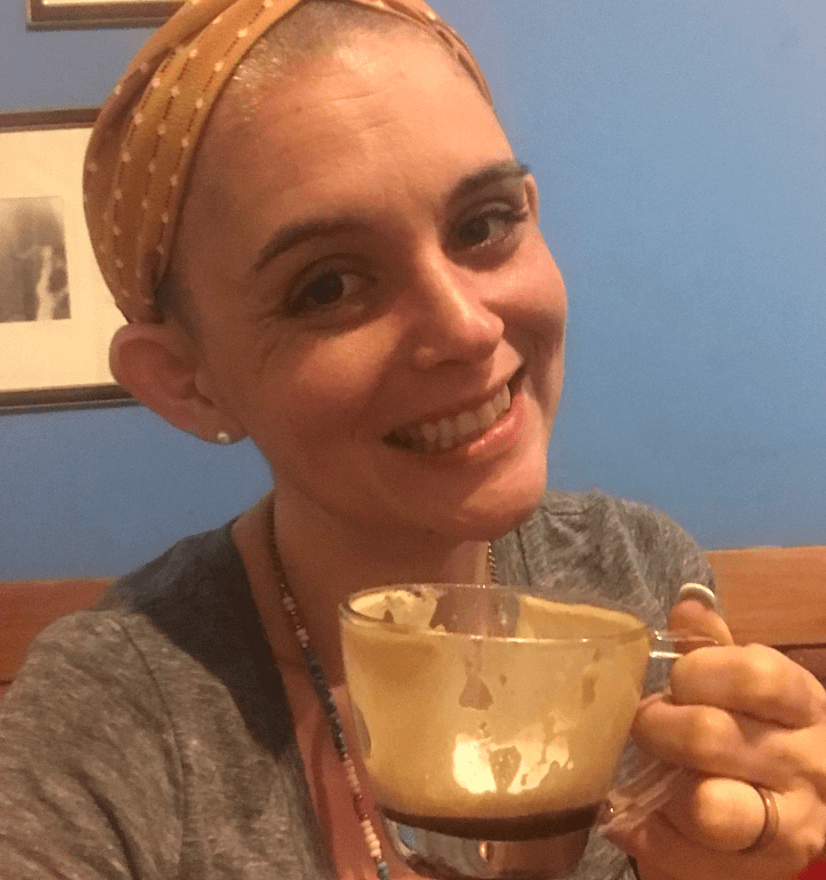
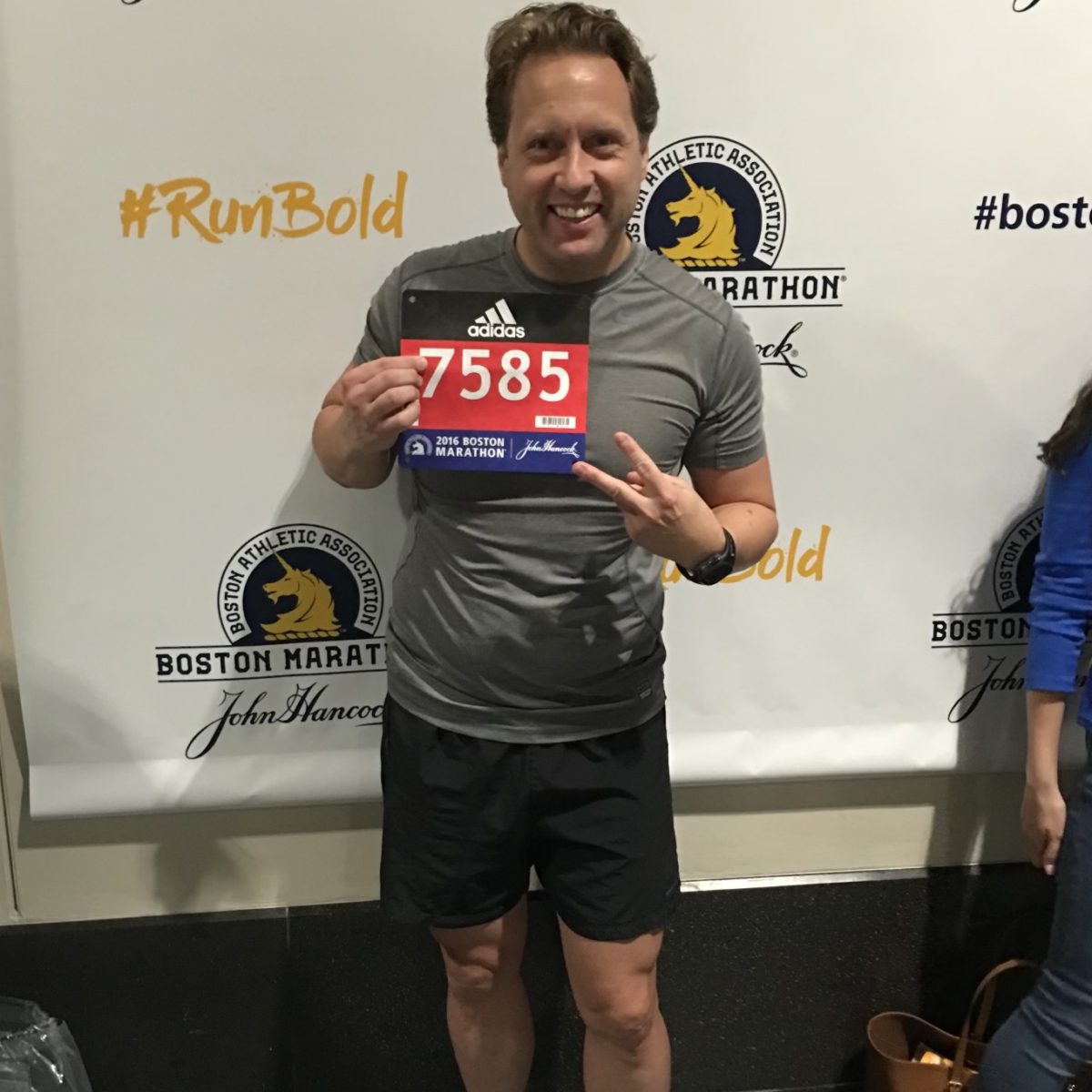
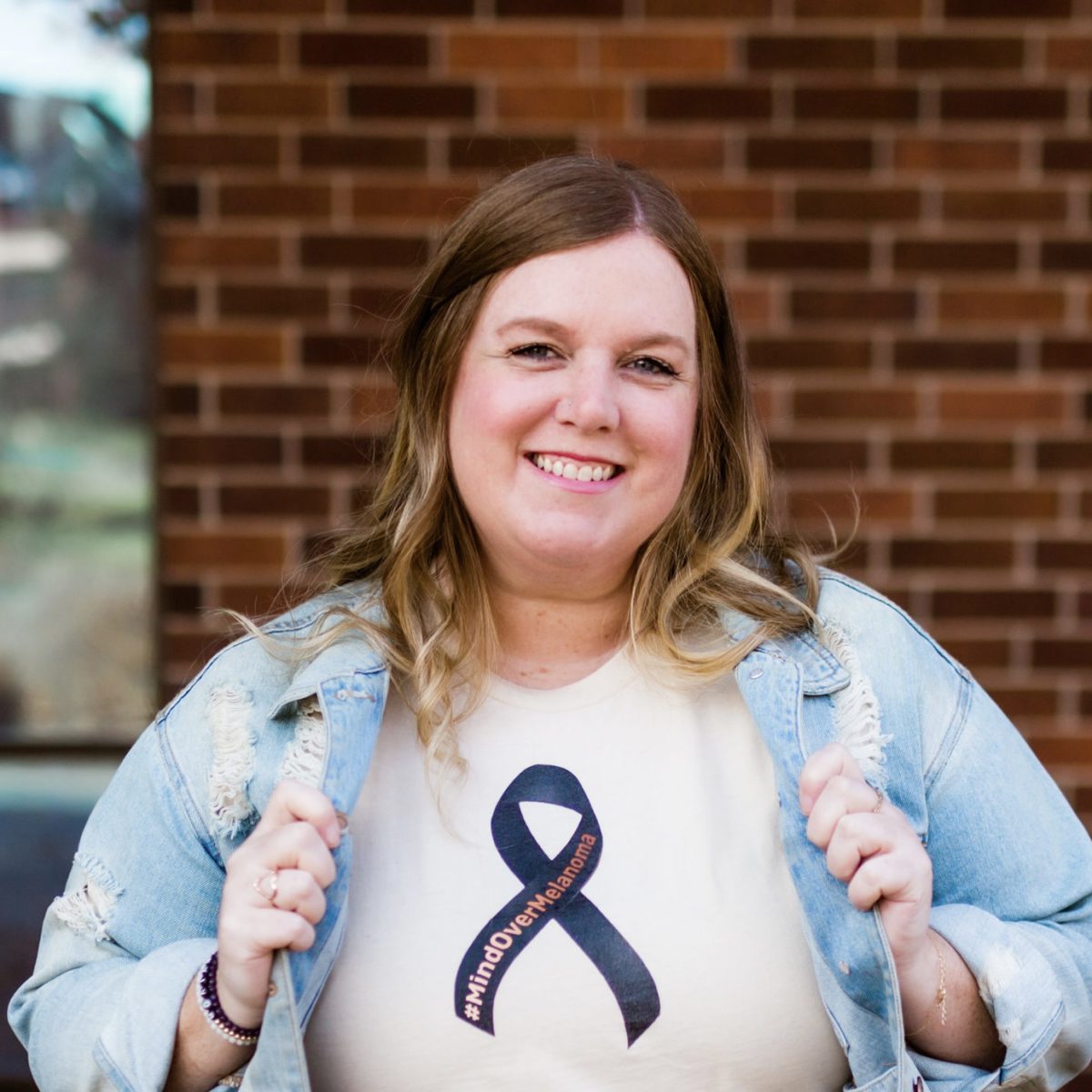
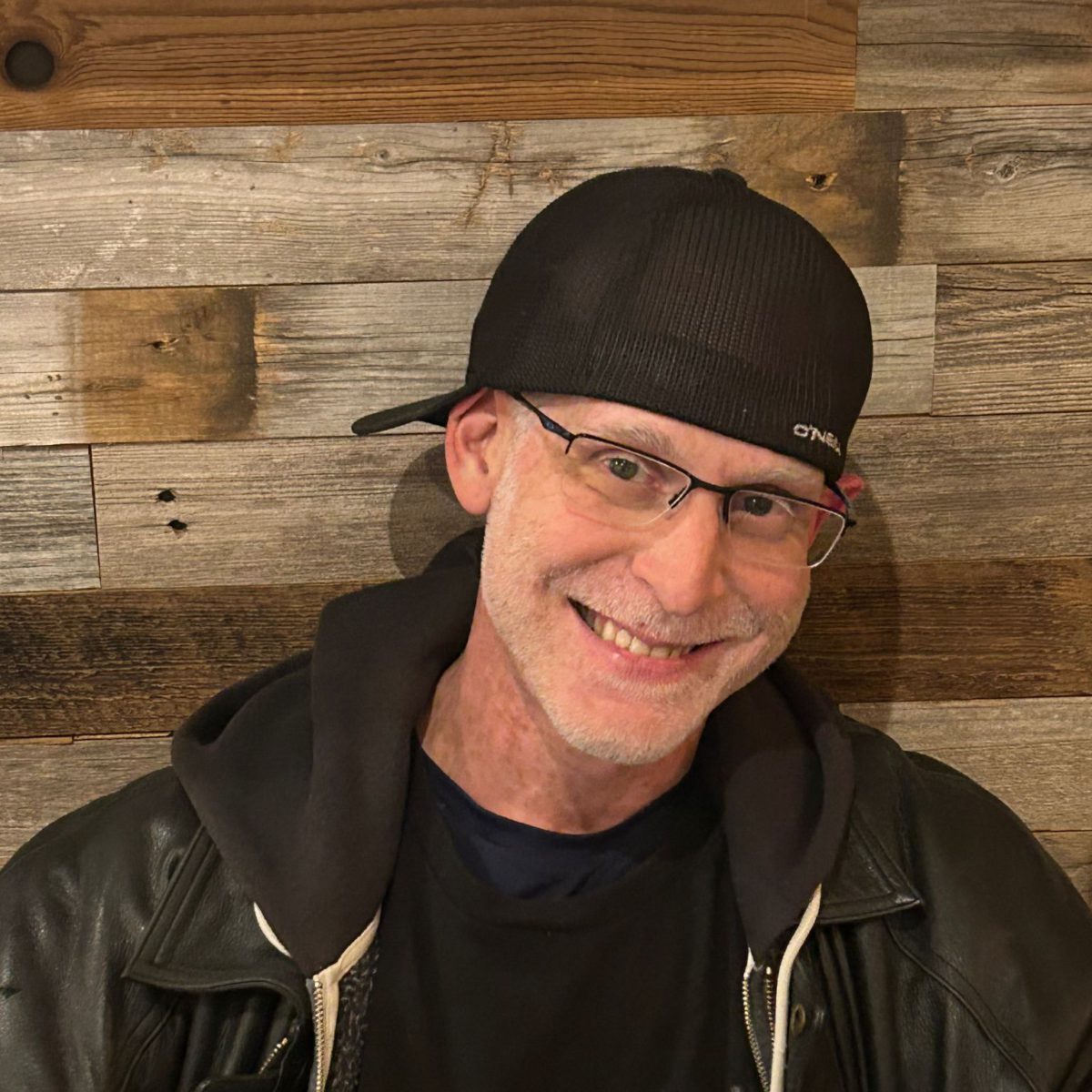
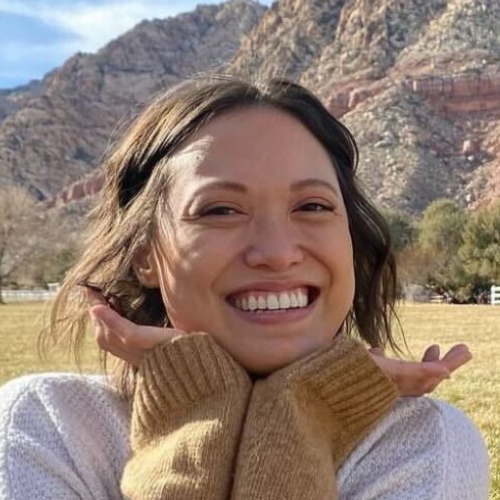

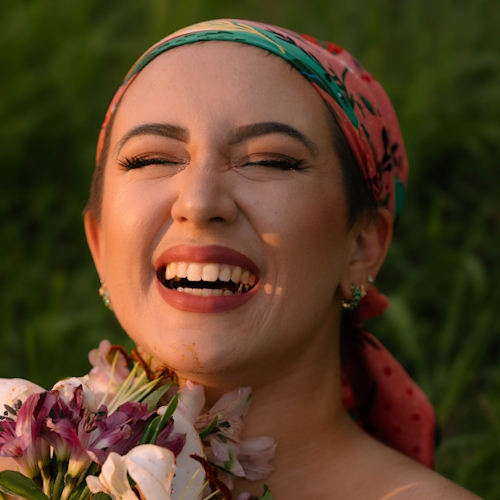
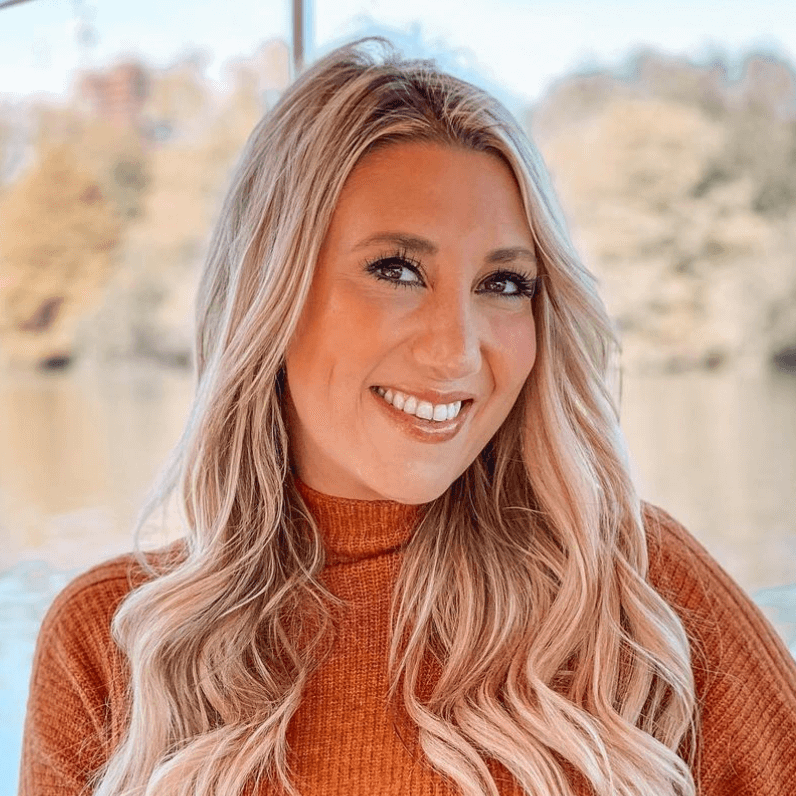
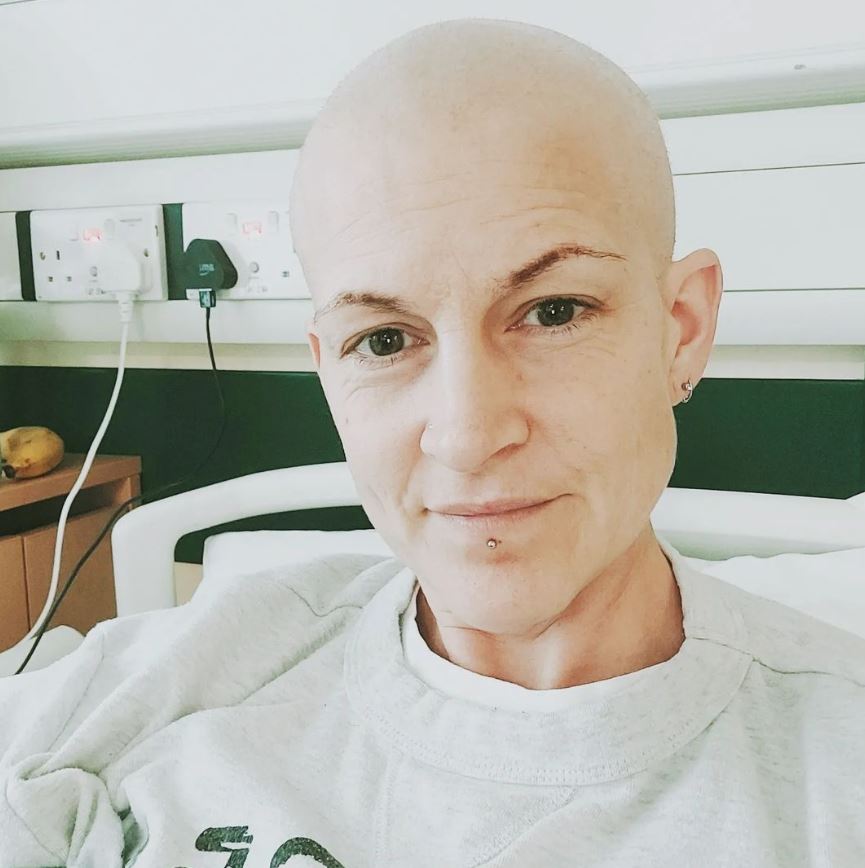
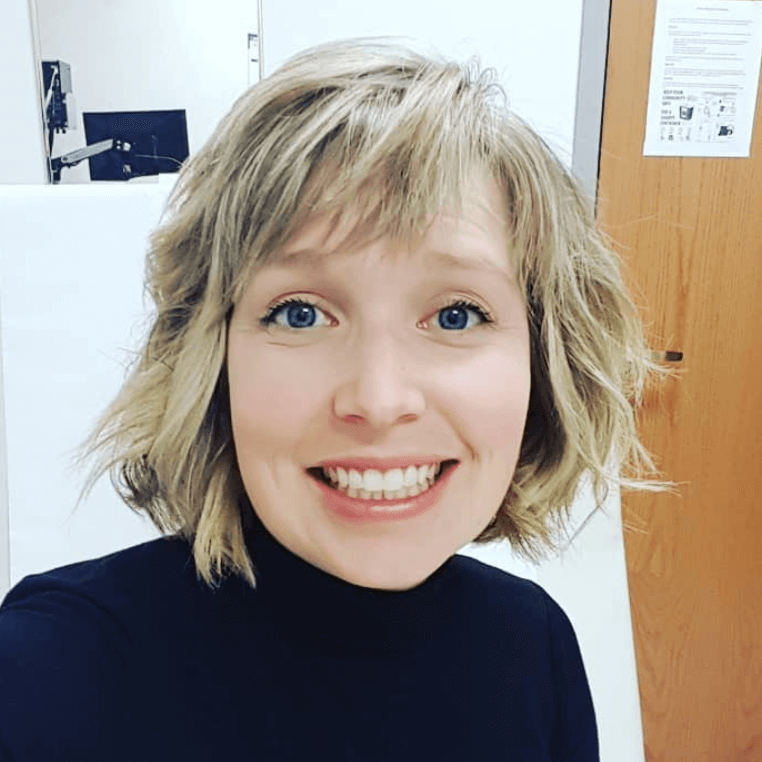
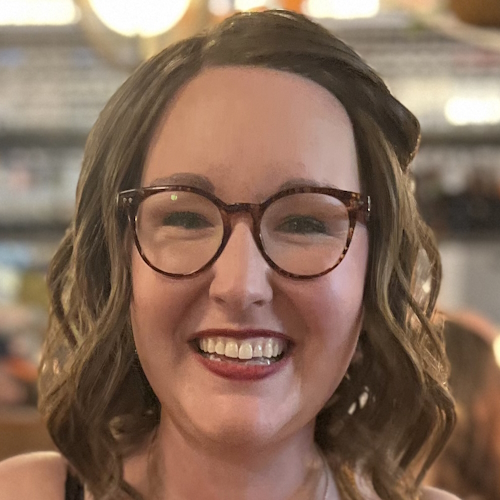
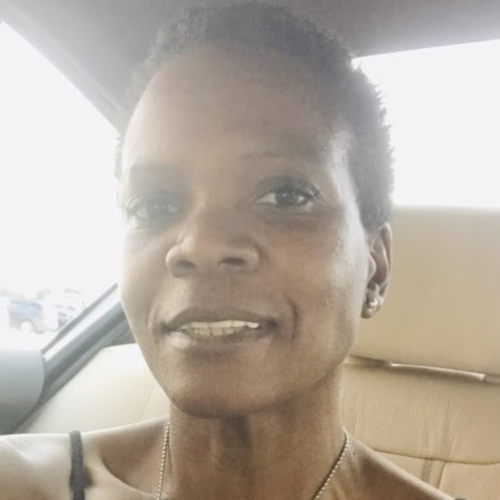
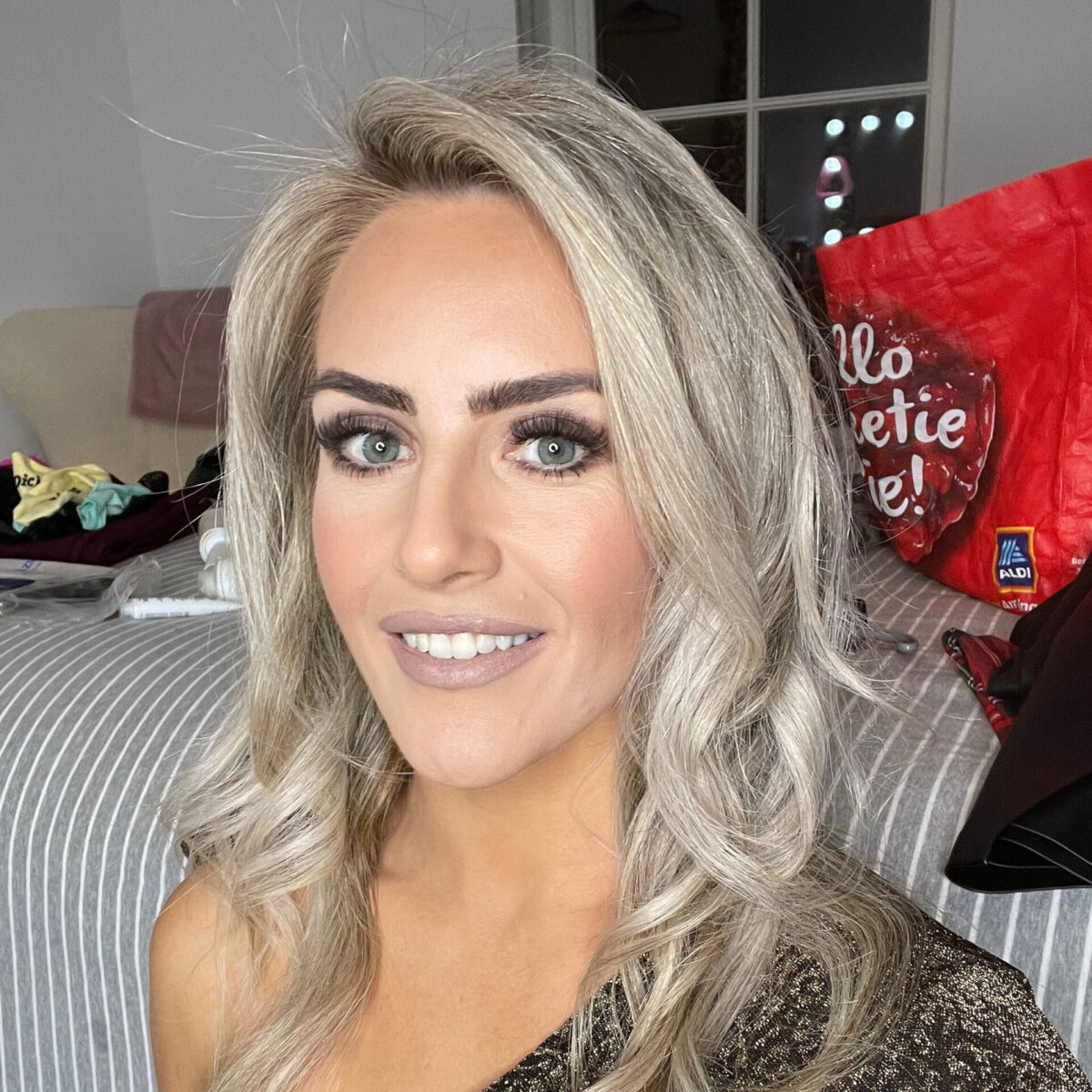
One reply on “Amy’s Melanoma and Cervical Cancer Story”
Thank you for sharing Amy’s powerful story. Her journey through melanoma and cervical cancer is both inspiring and educational. It’s crucial for us to raise awareness about the importance of early detection and regular skin checks. Amy’s resilience and advocacy remind us that we can all play a role in promoting skin health and supporting one another. Wishing her continued strength and health on her path to recovery!